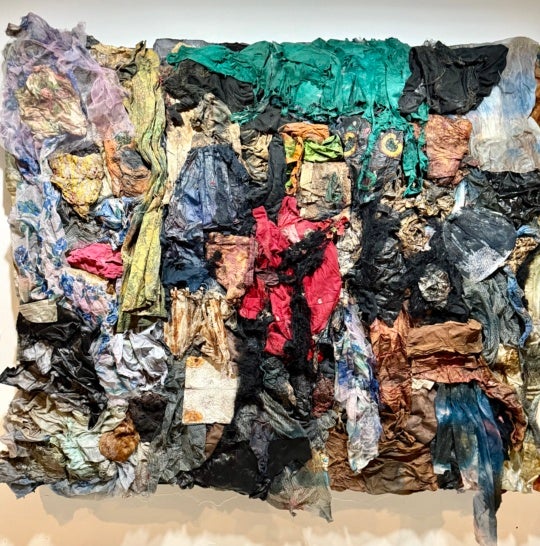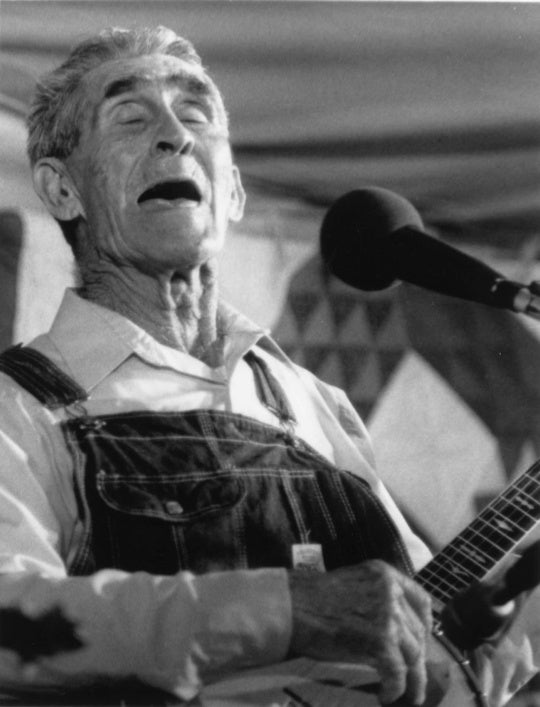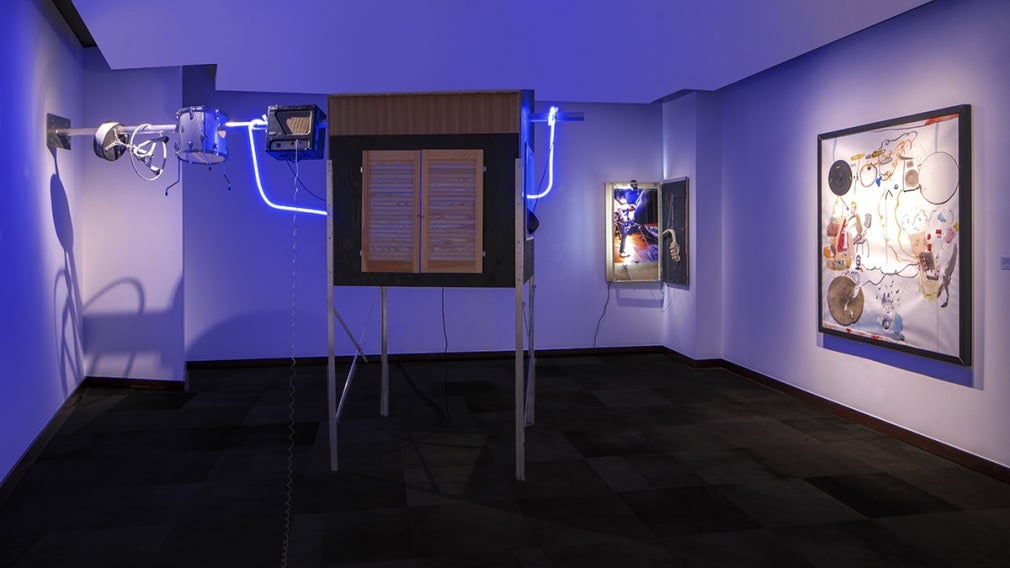
“Pink Noises,” the first U.S. solo show by Belgian artist Joris Van de Moortel, presents the artist’s rock-music-focused multimedia art in pitch-perfect fashion. The artist, who has shown in such locales as Paris, Madrid, and across Belgium, has transformed SCAD’s Gallery 1600 into a pulsing, electrifying space evocative of a rock show with custom-crafted neon tubing, repurposed musical instruments, light boxes, wires, and plywood. Some artworks look like the remains of a concert venue after a raucous performance. torn up by mosh-pitters and rock stars who like to smash their set pieces. The artist also captures an energetic potential in static objects, and his sculptures appear to be caught mid-concert with their twisting lines, broken edges, and vibrating colors.
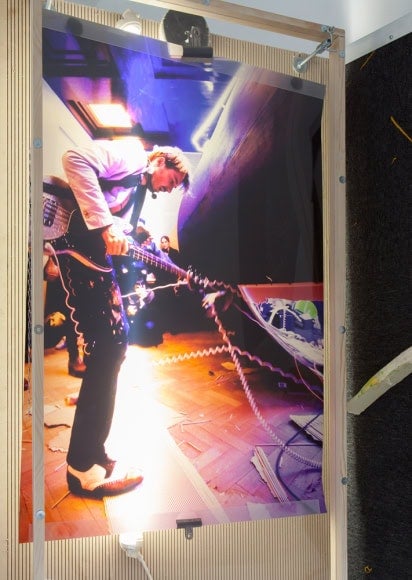
Many of the artworks in “Pink Noises” have a direct connection to rock concerts. In A particular sensitivity carried it to another degree, the artist presents a Duratrans photograph hung inside a Plexiglas light box. The image is of a performer looking down at his instrument as his hands strum the strings. The image immediately evokes the kind of light boxes in front of music venues or movie theaters advertising upcoming shows. The colors in the print are faded like an aging photograph taken by a disposable camera. The deconstructed style—with the print clipped in, not fully filling the frame, and revealing the light source—captures a specific, DIY rock-n-roll aesthetic.
Light plays an important role in many of Van de Moortel’s pieces. A sudden gall of unheard-of violence features two curving tubes of neon placed over an arrangement of a speaker, microphone, guitar, and instrument cable. The neon light here works on several levels to bring out the energetic potential of the other objects. On the surface, the swooping shapes bring to mind the form of a guitar being played by a performer. Placing the electrified neon tubes over the inactive—but otherwise electrical—musical equipment brings out the alternative current in all of the pieces as a whole.
Well I got up this morning, who all I had was gone poetically captures the hazy memories a famous musician like Joey Ramone or Lou Reed might have had after a epic night. The piece itself looks like what a hungover performer might see, or not, in the morning when he wakes up. On the right third of the piece, broken blue tile conjures the bathroom of a fleabag motel—where an aspiring musician might crash while on the road. There’s a mirror to see an unshaven face, ready to party another day. A color Polaroid is taped up crookedly on the broken tile, like a memento from the previous night’s concert.
The back of Gallery 1600 is dominated by the 8-foot-tall sculptural installation Birdhouse, bird piece with light, resin speakers and some instrumental objects with a hole cut through. The title pretty much sums up the piece, yet there is much more to the object than the simple objects would suggest. Cords bunch up and spill out of the artwork. A tube of neon glows from the inside, beckoning viewers to come closer. The artwork itself is indeed like a birdhouse, with windows that allow you to peek inside. Approaching the object, peering inside, exploring the forms of the neon and the cords all bring to mind the experience of going into a club. There is the dark exterior and the glowing interior. The neon tube stands in place of the musician in this birdhouse club.
Perhaps what is most fun about “Pink Noises” is the sense of play Van de Moortel gives the objects. Don’t you know you’re going to mess up the carpet (let’s roll) takes its humorous title quite literally. A 6½-foot wide roll of carpet is hung from the wall like paper towels in a public restroom. The white carpet is stained with paint in the form of energetic marks and a few decipherable scribbles, in particular, the word “Messy” on the bottom right. Above it a hole cut through the carpet brings adds to the trashy effect.
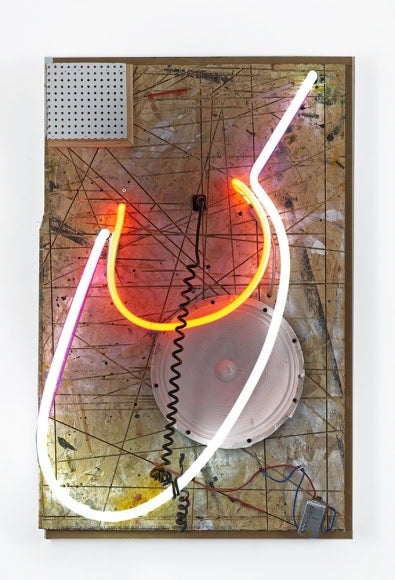
Rather than being literal or documentarian in his artwork, Van de Moortel takes the objects of rock ‘n’ roll and constructs sculptures that evoke how they might be used and abused in an actual show. His rebellious, torn-up aesthetic brings to mind the guitar-smashing legacy of Kurt Cobain, Jimi Hendrix, and Eddie Van Halen. Even if you can’t remember your last rock concert, this show will likely give you flashbacks.


